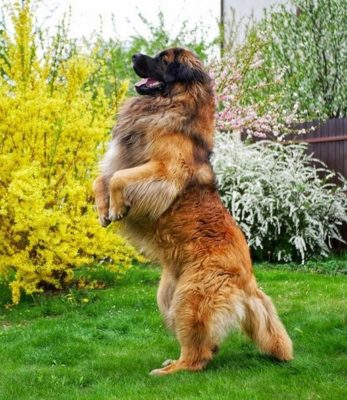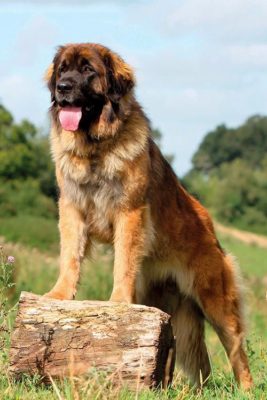Leonberger
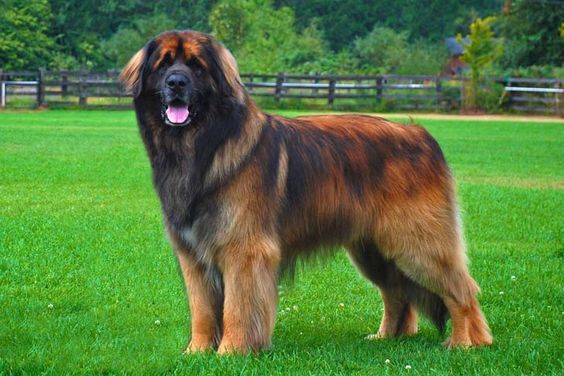
Despite its intimidating size, the Leonberger dog is a perfect, cheerful, and excellent companion. He can quickly be taken for walks and other activities. They can be considered excellent guards at home because they have a balanced character. They are useful to all members of the owner’s family and to other animals that live in the territory.
Table of Contents
Breed Information
| Another Name | – |
| Origin | Germany |
| Height | Males 72-80 cm Females 65-75 cm |
| Weight | Males 59-77 kg Females 45-59 kg |
| Fur | Straight, slight waviness is allowed |
| Color | Yellow, red, sandy, reddish-brown, and all combinations of these colors, always with a black mask |
| Lifespan | 10-11 years |
| FCI Classification | Pinscher and Schnauzer – Molossoid and Swiss Mountain and Cattledogs |
| Group | Watchdogs |
| Price | $350-950 |
Breed Photos
Origin History
The Leonberger dog is associated with the city of Leonberg in southwestern Germany. There Heinrich Essig wanted to create a dog that would resemble a lion in appearance, depicting the city depicted on the coat of arms.
The crossing of the Newfoundland and Saint Bernard produced the first ancestor of the Leonberger; then, the corner also involved the Pyrenean mountain dog.
Officially, Leonberger was born in 1846. Soon the dogs gained popularity throughout the world in high society circles and became real human pets. In the nineteenth century, dogs were used as guard dogs and protective dogs in farms.
During World War II, many dogs disappeared, and the breed was on the verge of extinction; very few purebred dogs survived. Now the dog is widely used in Europe and America.
Appearance
A large, strong dog does resemble a lion in appearance. It is due to the long, shaggy hair and large body.
Males differ from females in many ways. For example, the size. The height of males usually reaches 72-80 cm, and the height of bitches 65-75 cm. A male dog’s weight is 59-77 kg, while a female dog is 45-59 kg.
The ears of a Leonberger are tight to the head. The body is wide and embossed. Leonberger has a two-layer coat, which consists of a fluffy undercoat and a very long coat. A little waviness is allowed.
The thick coat can form a mane, combing. The color can be very diverse: yellow, red, sandy, reddish-brown, and all combinations of these colors, always with a black mask. There may be light hairs on the paws.
Character
Despite its intimidating size, the Leonberger dog is a perfect, cheerful, and excellent companion. He can quickly be taken for walks and other activities.
They can be considered excellent guards at home because they have a balanced character. They are useful to all members of the owner’s family and to other animals that live in the territory. They are easy to train, distrustful of strangers, and can react quickly and make decisions.
Leonberger is very fond of children, and whether they are family children or other people’s children, they can be used as babysitters. They are very wise and are not jealous of their owner’s other pets.
Care
The best home for this breed would be a private yard with an aviary. Because of their large size, it would be challenging to keep them in an apartment.
It is necessary to devote at least 2 hours every day to a walk because it will positively affect the musculoskeletal system. Their thick coat means they can handle all weather conditions with ease. A Leonberger requires constant contact with people, so you should never fence him off from access to the house.
Several times a week, you need to brush a thick coat with unique products. Bath no more than twice a year, preferably during the molting period. After bathing, the dog should be dried and combed thoroughly.
Once a week, you should brush his ears and check the condition of his eyes and mouth. In summer, it is recommended to take your dog out on a lake or river or equip a small pool, because a Leonberger is an excellent swimmer.
Training
When the puppy gets used to his family and his new home from an early age, you need to teach him easy commands and teach him socialization. The only disadvantage in training is the natural slowness of these dogs. They tend to take a long time to think and execute commands after a while. Functional training should begin at four months of age.
Common Diseases
The Leonberger dog has robust health, but you need to keep an eye on the skin, because dermatitis and allergies can occur. Like all large dogs, the Leonberger can have problems with arthritis and hip dysplasia.
Nutrition
It is recommended to feed an adult dog twice a day – in the morning and the evening. The diet should include meat, sea fish, by-products, vegetables (except cabbage), kefir, fruits.
 Carpathian Shepherd Dog
Carpathian Shepherd Dog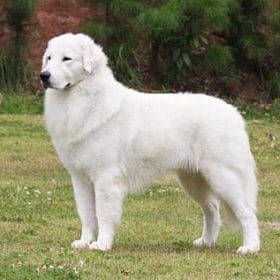 Maremmano-Abruzzese Sheepdog
Maremmano-Abruzzese Sheepdog Continental Toy Spaniel
Continental Toy Spaniel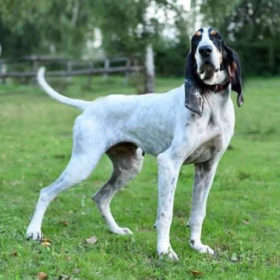 Grand Gascon Saintongeois
Grand Gascon Saintongeois Bolognese
Bolognese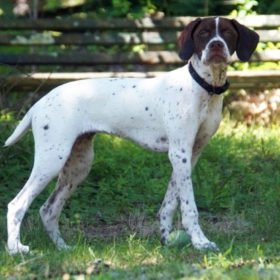 Braque Francais (Pyrenees)
Braque Francais (Pyrenees)
